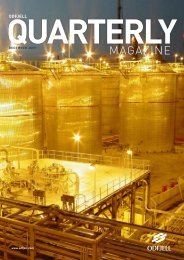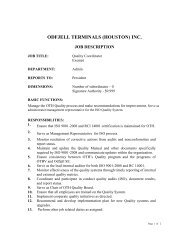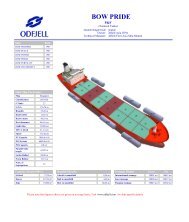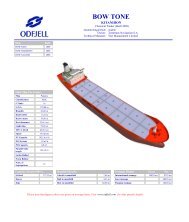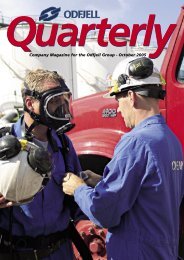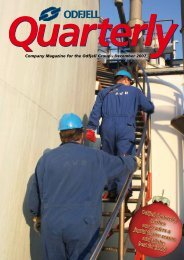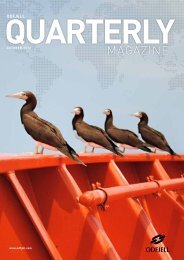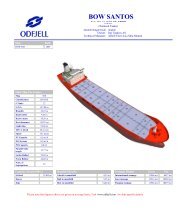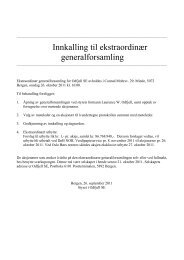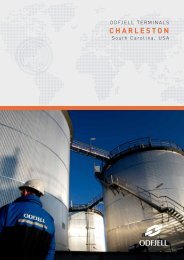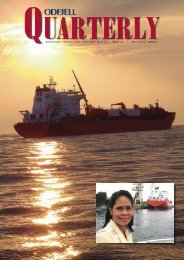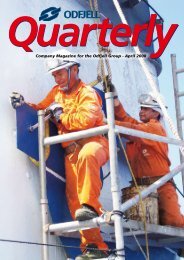Create successful ePaper yourself
Turn your PDF publications into a flip-book with our unique Google optimized e-Paper software.
Wall wash equipment inside the tankis no secret that the most important factorwhen it comes to safety in any shipboardoperation is skilled people withthorough understanding of the jobas well as the dangers involved. Thereis absolutely no substitute for real lifeexperience when it comes to practicalchemical tanker operation.Tank cleaning machines are used whencleaning a ship’s cargo tanks. They areeither lowered into the tank, typicallyon older vessels, or they are mountedfixed into the tanks. The machines aresupplied with water through rubberhoses from a pipeline on deck, normallyreferred to as the Butterworth line. Thetemperature of the water is regulatedvia a steam heater. There are a numberof other aspects in a cleaning operationthat may be necessary, such as manualcleaning, spraying with deionised waterand steaming, which require the use ofother types of equipment. However, letus not take it too far in this article.In certain cases, where the cleaning isexpected to become very demandingor needs particular procedures, MarineSupport Group can be present on boardto support the crew in carrying out theoperation. Recently I had the pleasureof joining Captain Etrata and his crewon Bow Puma, to assist in a demandingtank preparation before loading full2nd Officer Richie Mejares performing some sample testingcargo of ethanol in Brazil. Previous cargoeswere a combination of lubricatingoils, palm oils, synthetic paraffin andpropyl alcohol. All of the vessels tanksexcept the ones last containing propylalcohol were due for a severe cleaning.As mentioned the test criteria may varydepending on the quality of the nextcargo. In our case the passing of the socalledTyndall test and chloride test wasmandatory for all the ethanol grades. Inaddition, the tanks scheduled to holdhigh grade ethanol were tested withUV-test and non-volatile matter test.For the very first time we had a UV-meteron board for trial and thus, we wereable to do the UV-scan prior to presentingthe tanks.The wall washes we collected after theinitial water cleaning left us with nothingbut disappointment. The cleaningwas continued as a round the clock activity.Depending on the tasks at handwe sometimes worked long days withthe whole deck crew, but in most caseswe split the deck crew into two groupsand continued 24 hours a day in a sixhours on/off system. The engine crewwas also working around the clock in asimilar pattern while the cleaning wasgoing on, due to the massive powerconsumption and the constant use ofsteam.After 16 days of cleaning we arrived inSantos with all 27 ethanol tanks readyfor inspection. The inspection, wallwash collection and subsequent analysistook several hours and involved anotherround of procedures, check lists andpre-briefings before doing the actualjob. All the tanks passed and the loadingwent on without any problems. Welldone Bow Puma!Wall wash samples seriously failingthe Tyndall testCleaning chemicals stored on deck<strong>Odfjell</strong> <strong>Quarterly</strong> <strong>September</strong> <strong>2007</strong> 33



